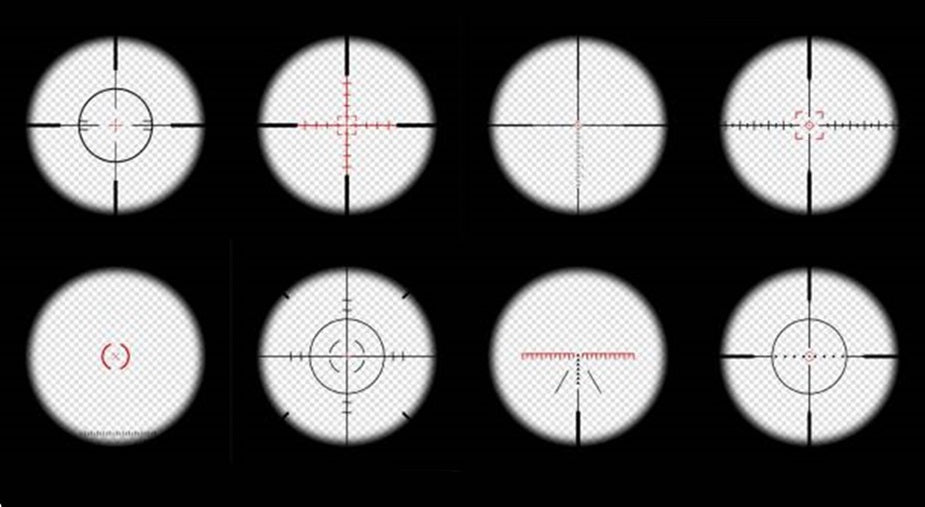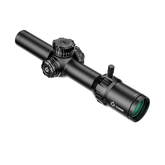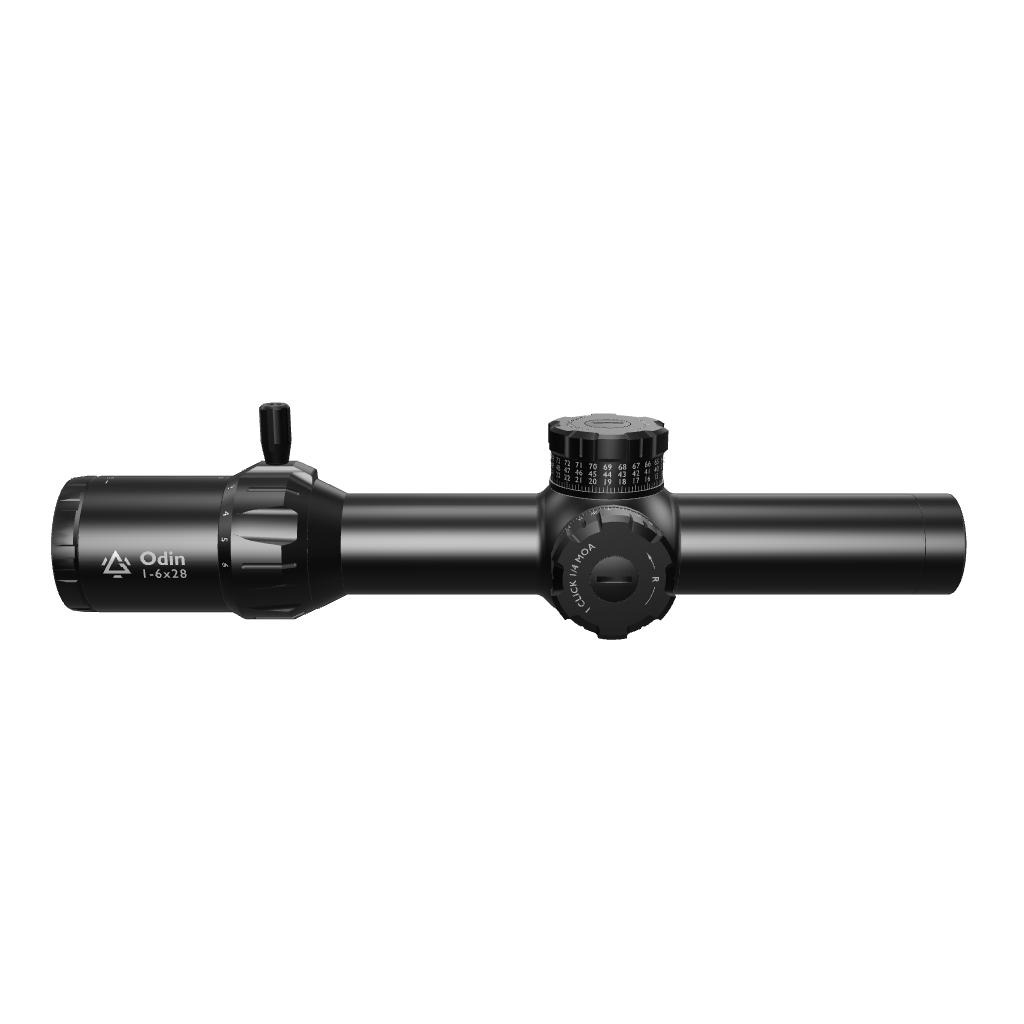Scope Reticle Types: Everything You Need to Know
Many shooters focus on magnification or lens quality when choosing a scope. However, the reticle pattern can be the difference between a successful shot and a miss. In fact, the reticle in your scope serves as the critical interface between you and your target.
Understanding different reticle types will help you match the right tool to your shooting needs, whether you're hunting, competing, or practicing long-range precision shooting.
Rifle Scope Reticles: Why they Matter
The type of reticle on a rifle scope plays a critical role because it determines how effectively a shooter can aim, and shoot and how flexible they are to adapt to different shooting scenarios.
Using the wrong reticle type will limit your shooting capability, while the right one will enhance your accuracy and extend your effective range.
Moreover, there is a vast difference in how reticles are designed: different designs (e.g., duplex, mil-dot, BDC, illuminated) provide varying levels of precision and are most suitable for different shooting styles.
-
Simple crosshairs are ideal for beginners and for general use, while Mil-Dot reticles are best for advanced and experienced shooters.
-
BDC reticles are better for long-range shooters, while illuminated reticles are best in low-light conditions.
-
Also, some reticles are designed for specific calibers or bullet trajectories.
Types of Rifle Scope Reticles: A Breakdown
Let's explore the most common types of reticles and their specific applications.
Duplex Reticles
The duplex reticle is the most common and traditional type of reticle design, and it is regarded as the grandfather of modern reticle designs. The pattern is simple but effective, featuring thick outer posts that taper to fine crosshairs in the center.
The design of a duplex reticle offers several advantages:
-
Quick target acquisition due to the thick outer posts
-
Precise aiming point with fine center crosshairs
-
Excellent low-light visibility
-
Simple and intuitive to use
-
Perfect for general hunting applications
The setback with duplex reticles is that they lack advanced-ranging features. However, their simplicity makes them ideal for hunters who need quick target acquisition in varying light conditions.
If you mostly hunt in woodland areas, for example, where your shots are likely to be under 200 yards, a duplex reticle is the way to go!
Mil-Dot Reticles
Mil-dot reticles were originally designed for military applications, but they have become a standard in precision shooting, mainly because they offer precise range estimation capabilities.
A mil-dot reticle is a standard, specific pattern of duplex crosshair reticles, except it has small dots, usually three or four, spaced at precise milliradian intervals (often 0.25 MIL) along the crosshairs.
Here are some key benefits of using a mil-dot reticle:
-
Precise range estimation capabilities
-
Consistent holdover references
-
Wind drift compensation
-
Universal measurement system
-
Excellent for long-range shooting
Consider a mil-dot if you are a long-range shooter or a law enforcement professional who might need precise measurement capabilities.
Take Note
Mil-dot reticles are a little more complex, especially compared to duplex reticles, and so may require more training to use effectively.
BDC (Bullet Drop Compensator) Reticles
BDC reticles are designed to provide quick holdover points for specific cartridges at varying distances. The fact that they are calibrated for specific loads makes BDC reticles a little less flexible, but they do offer a practical solution for shooters who regularly engage targets at varying distances.
Here are the advantages of using a BDC reticle:
-
You get multiple aiming points down the vertical crosshair
-
It is already calibrated to specific bullet trajectories
-
Simple to use at known distances
-
Excellent for hunting applications
-
Quick engagement at varying ranges
BDCs are particularly effective when paired with popular hunting cartridges, so you might want to consider one if you are a hunter.
Christmas Tree Reticles
Christmas tree reticles represent modern precision shooting technology at its finest. These sophisticated reticles may be even more complex than mil-dots, but they offer the most complete features and capabilities for long-range shooting.
Here is what you get from a Christmas tree reticle:
-
Grid pattern resembling a Christmas tree
-
Multiple wind hold points
-
Detailed elevation references
-
Comprehensive ranging capability
-
Ideal for precision rifle competitions
They're particularly popular in precision rifle competitions where shooters must engage targets at varying distances in changing wind conditions.
Addressing Illuminated Reticles and MOA Reticles
Illuminated Reticles: Everything You Need to Know
Illuminated reticles aren't a specific reticle design: rather, they are a feature that is available across various reticle designs. BDC reticles, Christmas tree reticles and mil-dot reticles would all be illuminated reticles if they have the illumination feature.
The major advantage of an illuminated reticle is the enhanced visibility it offers in low-light conditions. Some illuminated reticles offer as many as five brightness levels, each more intense than the other.
Here are some advantages of using an illuminated reticle:
-
Adjustable brightness settings
-
Better contrast against dark targets
-
Available in most reticle patterns
-
Extended shooting hours
MOA Scope Reticles
The major difference between a MOA (Minute of Angle) reticle and a Mil-dot reticle is that they use different measurement systems. The hash marks in an MOA reticle are in 1/4 or 1/2 MOA increments, which is more familiar to American users.
However, just like Mil-dots, they are precise when it comes to adjustment and excellent for long-range shooting.
Many shooters prefer MOA reticles because they align with common scope adjustment values and American measuring systems.
Choosing the Right Reticle
The best reticle is one that matches your shooting needs without overwhelming you with unnecessary features. For most hunters, a simple duplex or BDC reticle might be best.
A competition shooter would say that a Christmas tree or detailed MOA reticle is best. Tactical shooters often opt for mil-dot or Christmas tree reticles are best.
When selecting a reticle, consider your primary shooting application, the engagement distances you typically encounter, light conditions at the time and location you are shooting, your level of personal experience as well as your budget.
-
Primary shooting application
-
Typical engagement distances
-
Light conditions
-
Personal experience level
-
Need for ranging capability
-
Budget constraints
Give Gunnr Odin LPVOs a Shot
Gunnr LPVOs offer you an FFP reticle with a Christmas tree reticle; your holdovers, wind holds, and range estimations stay consistent as you adjust magnification, so you’re always dead on.
Whether you’re using it in tactical operations, competitive shooting, or hunting, Gunnr LPVOs are engineered for versatility, accuracy, and durability.
Gunnr’s LPVOs come in multiple magnification ranges. You can choose between the Odin 1-6x28, the Odin 1-8x25, and the Odin 1-10x28.
This means you’re ready for anything, whether you’re clearing rooms, hitting a long-range target, or taking on unpredictable field conditions.
Here are some main features of Gunnr scopes that may come in handy in the field:
-
The German Schott lenses are clean, acute, and clear.
-
They are FFP LPVOs: suitable for most shooters.
-
They are made of durable 7075 Aluminum Alloy.
-
They come with locking turrets and a zero-stop feature
-
Then there’s Gunnr’s customer support, which is always present to respond to questions and concerns. Gunnr provides a lifetime warranty for its products, and the team is dedicated to giving you all the assistance you need in your shooting endeavors.
With Gunnr’s LPVOs, you get a robust, all-in-one optic solution for a variety of applications.
Conclusion
Understanding reticle types is crucial for maximizing your shooting potential. While simpler reticles like the duplex pattern remain popular for good reason, advanced reticles offer capabilities that can significantly enhance your shooting in specific situations.
Take time to match your reticle choice to your shooting needs, and consider investing in training to make the most of your scope's capabilities.







